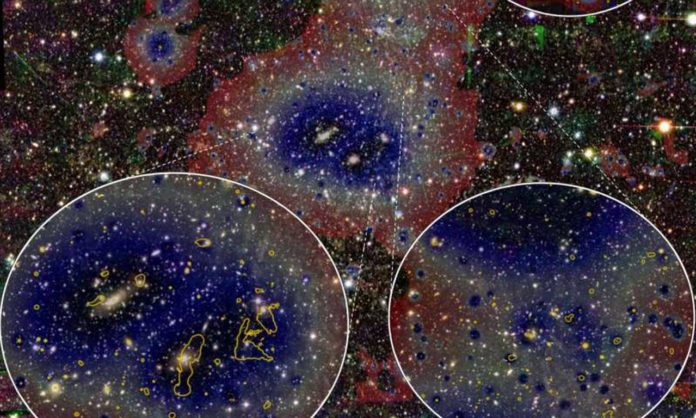In physical cosmology, galaxy filaments are massive, thread-like formations that form the boundaries between large voids in the universe. The filaments consist of gravitationally bound galaxies.
In recent, a team led by the University of Bonn has- for the first time- discovered a gas filament with a length of 50 million light-years. Its structure is strikingly similar to the predictions of computer simulations.
Scientists examined a celestial object called Abell 3391/95, a system with three galaxy clusters. It is approximately 700 million light-years away from Earth.
The discovery was made using the eROSITA space telescope. The eROSITA images show the clusters and numerous individual galaxies and the gas filaments connecting these structures. The entire filament is 50 million light-years long. But it may be even more enormous: The scientists assume that the images only show a section.
Prof. Dr. Thomas Reiprich from the Argelander Institute for Astronomy at the University of Bonn said, “According to calculations, more than half of all baryonic matter in our universe is contained in these filaments—this is the form of matter of which stars and planets are composed, as are we ourselves.”
“Yet it has so far escaped our gaze: Due to the enormous expansion of the filaments, the matter in them is extremely diluted: It contains just ten particles per cubic meter, which is much less than the best vacuum we can create on Earth.”
“eROSITA has sensitive detectors for the type of X-ray radiation that emanates from the gas in filaments. It also has a large field of view—like a wide-angle lens, it captures a relatively large part of the sky in a single measurement and at a very high resolution. This allows detailed images of such huge objects as filaments to be taken in a comparatively short time.”
When scientists compared their observations with the results of a simulation that reconstructs the universe’s evolution, they found that the eROSITA images are strikingly similar to computer-generated graphics. This suggests that the widely accepted standard model for the evolution of the universe is correct.
Most importantly, the data show that the missing matter is probably actually hidden in the filaments.
Journal Reference:
- T.H. Reiprich et al. The Abell 3391/95 galaxy cluster system. A 15 Mpc intergalactic medium emission filament, a warm gas bridge, infalling matter clumps, and (re-) accelerated plasma discovered by combining SRG/eROSITA data with ASKAP/EMU and DECam data, Astronomy & Astrophysics (2020). DOI: 10.1051/0004-6361/202039590
